Tuesday, 5 March 2024
Tuesday, 27 February 2024
A World Through the Eyes of Botanical Artist Marianne North at Kew Gardens
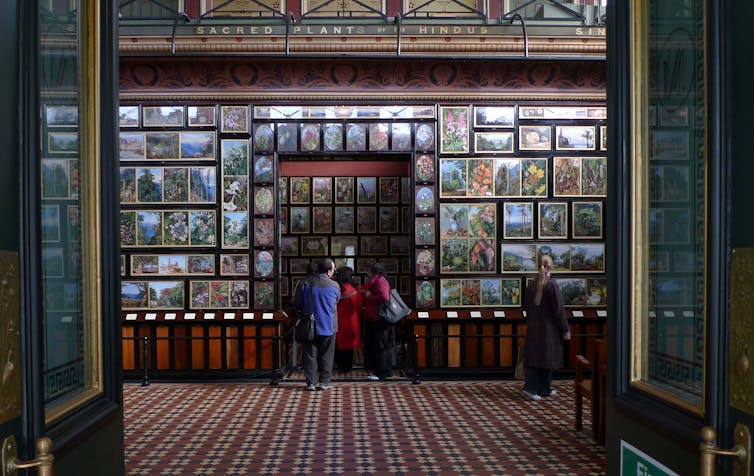
Have you ever entered a gallery, cathedral or grand old ballroom and drawn breath with surprise? Usually, it is opulence, vastness or one stunning painting or sculpture that evokes this response — think Michelangelo’s David, or Chartres Cathedral or the hall of mirrors at Versailles.
In London, an extraordinary gallery draws gasps because there is none like it anywhere else. It is like entering a giant “globe” covered in paintings of faraway places and plants. You can walk from South America to North America to Asia in a few paces.
All the paintings are by the Victorian-era female botanical artist and explorer Marianne North. The small gallery nestles in a stunning natural setting — Kew Gardens beside the Thames River.
A very intrepid painter
The design of the gallery and the layout of the 800-plus paintings were largely North’s idea, assisted by Kew Gardens staff. Though she was a largely self-taught botanical illustrator, she also discovered four specimens that were named in her honour.

I remember my first impression of the peacefulness and softness on entering the gallery, elicited by a timber-panelled gallery covered top-to-bottom with paintings. It is a tightly packed mosaic of artworks.
Then I notice the gold lettering of countries and continents above the panels —America, Australia, Japan, Jamaica — and begin to explore the natural world as it was in Victorian times.
The vibrancy, colour and beauty in each individual painting emerges on closer viewing.
I walk from one continent to another noticing the unique vegetation of each, but also the similarity and diversity of natural forms — when these paintings were being created and collated, Charles Darwin had already written:
[…] endless forms most beautiful and most wonderful have been, and are being, evolved.
The gallery displays this exquisitely, from a grand avenue of Indian rubber trees in Ceylon (Sri Lanka), medicinal plants from the tropics, vivid tangerine flowers on coral trees in Brazil, early coffee plantations in Jamaica, to a tall and majestic monkey puzzle tree in Chile. Australian banksia, bottle tree and bottle-brush are accurately and beautifully depicted.
Within the walls of the gallery, I can even travel back in time to see what Mudgee in NSW looked like in the late 1800s.
Then there are the four specimens named in North’s honour. Kniphofia northiae, discovered in South Africa, now grows in many gardens with the common name red hot poker (Painting no. 367). Northia seychellana is also called the capucin tree Painting no. 501). Nepenthes northiana, a large and unusual pitcher plant, was discovered by Marianne in Borneo (Painting no. 561). And crinum northianum , in the lily family (Painting no. 602), comes from Sarawak, Borneo.
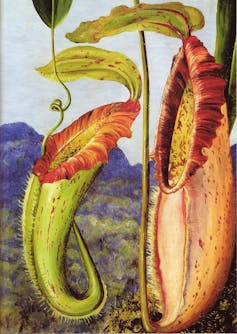
When Charles met Marianne
North was one of several Victorian-era British female explorers. She was born (1830) into a wealthy family and had early connections to Kew gardens since her father knew its first director, Sir William Hooker.
Her interest in botanical art grew as an educational activity and as a means of passing on knowledge in pre-photography times. She made nearly 900 works from across the continents and larger islands.
North set out on her first main botanical tours in the 1870s, 40 years after Darwin sailed on HMS Beagle, determined to “paint from nature”. Her paintings of vegetation, birds, mammals and terrain, depicted with close accuracy, helped to foster awareness of the evolutionary connections between plants, animals and environment.
North and Darwin were in fact acquainted. In 1880 they met and discussed her paintings and he advised her to see and paint the Australian vegetation “which was unlike that of any other country”. North took Darwin’s advice, and returned to Down house in 1881 with a new collection spanning Townsville to Perth.

The world through her eyes
North gifted her botanical collection to Kew Gardens along with a gallery to house it. She arranged the paintings and also the decorations surrounding the doors to the gallery. Hence the unique design and global feel of the gallery interior. It opened in 1882.
Some 140 years later, we can explore her adventurous life and travels and view a global nature study in one gallery. With today’s technology we can see much of it online, which is handy during lockdown. I wonder what human expansion and global warming have done to those special places? If I could retrace North’s steps, what would I see?
After “browsing the continents”, you can exit the gallery into Kew Gardens. Among the 50,000 plants at the World Heritage site, you can search for the rare Australian Wollemi Pine, growing quite vigorously in the grounds.
The words of Darwin in 1859’s Origin of Species come to mind: “There is grandeur in this view of life”.![]()
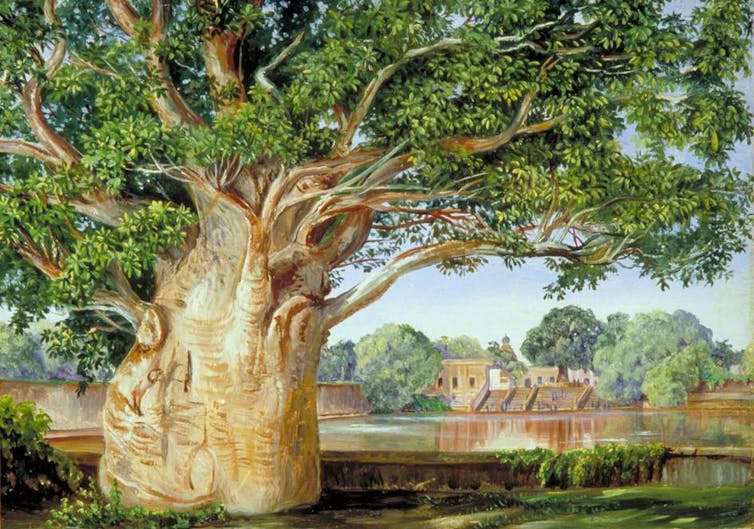
Mary Voice, Lecturer - Climate (Honorary), The University of Melbourne
Subscribe to support our independent and original journalism, photography, artwork and film.
Thursday, 15 February 2024
TRAVEL: How Social Media is Breathing New Life into Bhutan’s Unwritten Local Languages
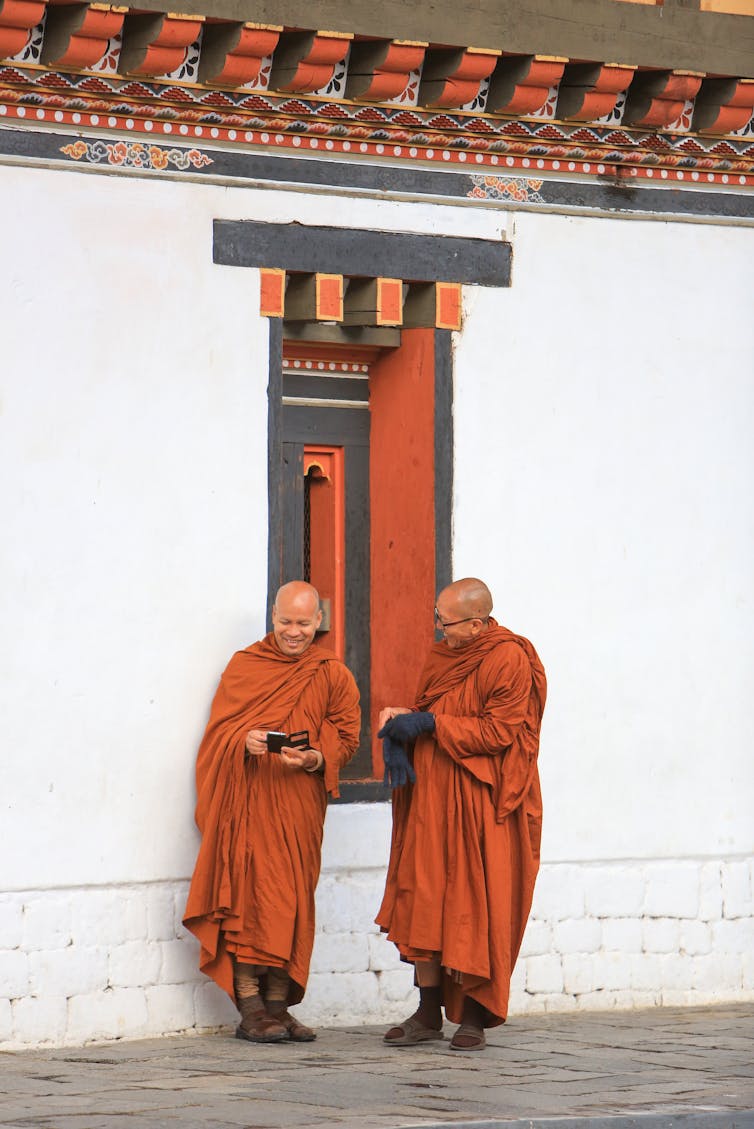
Dechen, 40, grew up in Thimphu, the capital city of Bhutan. Her native language was Mangdip, also known as Nyenkha, as her parents are originally from central Bhutan. She went to schools in the city, where the curriculum was predominantly taught in Dzongkha, the national language, and English.
In Dechen’s house, everyone spoke Dzongkha. She only spoke her mother tongue when she had guests from her village, who could not understand Dzongkha and during her occasional visits to her village nestled in the mountains. Her mother tongue knowledge was limited.
However, things have now changed.
With 90% of Bhutanese people using social media and social media penetrating all remotes areas in Bhutan, Dechen’s relatives in remote villages are connected on WeChat.
She is in three WeChat groups where people usually communicate through voice messages in their native language. Most WeChat users in rural parts of the country communicate in their oral native language.
“I learn many words. I learnt how to say a lot of things in my own language,” the mother of two now living in Western Australia told me.
Dechen’s story is not isolated. Social media is giving a new lifeline to Bhutan’s native languages, which do not have written script and lack proper documentation. By communicating through voice messages, social media is giving Bhutanese people in both urban and rural areas a new opportunity to use their local language.
Losing Bhutan’s languages
Bhutan is a tiny Himalayan nation with a population of under 800,000 people. Internet and television was introduced only in 1999 and mobile phones in 2004.
The country has more than 20 local languages, but only Dzongkha has written text and is promoted as the national language.
The country struggles to promote the national language and its usage against English. Today most urban residents, especially the elites, speak English as their primary language.

Many languages – especially minority languages – are vanishing or becoming endangered as younger generations switch to Dzongkha and English.
The medium of instruction in schools is mostly in English; Dzongkha is taught only as grammar and literature. Students are shamed and often punished for using their local languages.
The preservation and promotion of local languages, therefore, depends on the speakers. A language faces extinction when its speakers die out or switch to another language.
Linguist Pema Wangdi has researched languages in Bhutan, and he told me many people are losing their native language.
“When we lose our language, we lose a piece of our national identity,” he told me.
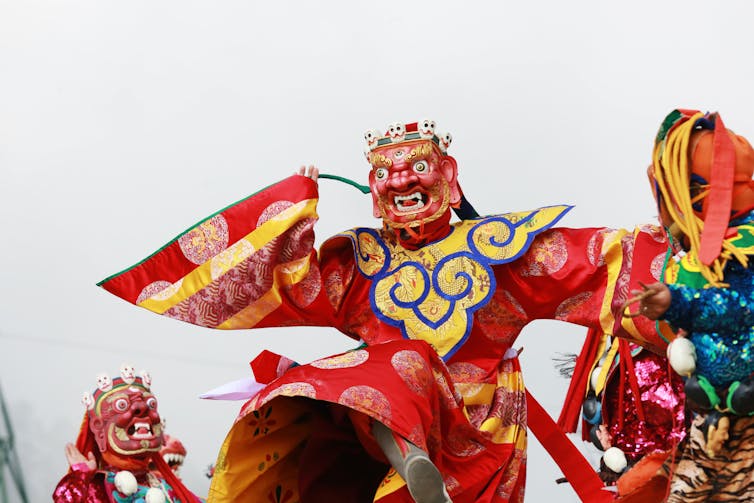
Wangdi has identified there are no longer any speakers of Olekha, an indigenous dialect of Rukha in Wangdu Phodrang.
“The loss of a single language is a loss of a piece of our national linguistic heritage and identity,” he said. “When a language is lost, cultural traditions which are tied to that language such as songs, myths and poetry will be lost forever.”
Other Bhutanese languages – including Tshophu language of Doyaps in Samtse, Monpa language of central Bhutan, and Gongdukha of Mongar – are endangered and at the brink of extinction.
Preservation of local languages
The future of the minority languages are at threat. The Constitution of Bhutan mandates the preservation and promotion of local languages, but there are no official efforts to preserve native languages.
But encouraging people to speak their native languages can have far reaching benefits in preserving and promoting Bhutan’s rich culture and tradition. Language embodies identity, ethnicity and cultural values: a thriving local language would help transfer this intangible wealth to the younger generation.
Social media could be an invaluable tool in this preservation.
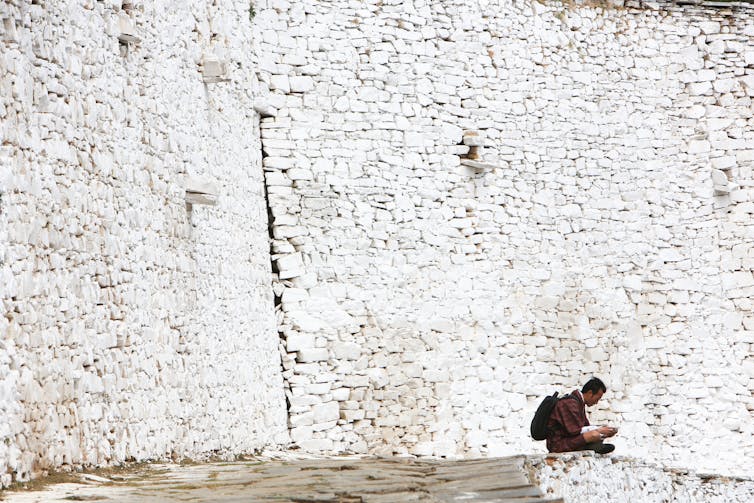
Bhutan could save its languages from becoming extinct with promotion of social media usages and language education could be done on the social media platforms. With both young and old people glued to social media, encouraging more people to use local languages in social media could generate interest among the youth to learn their local languages.
It could also help in documenting the endangered local languages as the older generation can record their voices on WeChat.
Many elder citizens feel strongly about their language and emphasise teaching their mother tongue to the younger generation and their grandchildren. Social media – joining the younger generation on platforms where they feel at home – could be the way forward.![]()
Tashi Dema, PhD Candidate in Language and Politics, University of New England
Subscribe to support our independent and original journalism, photography, artwork and film.
Monday, 5 February 2024
The Alchemy of Couture: The Creative Process of Yuima Nakazato
 |
| Sculptural designs mix the diaphanous with the dramatic. evoking a new urban armour. Photograph: Elli Ioannou |
“In the process of creating this collection, I came across the Japanese word utakata, which means ephemeral," he explains. “This word seemed to express the exact opposite of the trend seen in the evolution of men's clothing, where functionality and durability are increasingly valued and prioritized.
"What I wanted to convey was a sort of ephemeral armour, much like a delicate bubble formed on the surface of the water, capable of vanishing in the blink of an eye. This approach also represents a release from or renunciation of battle.”
Nakazato merges the realms of fashion, art, and performance to explore history, and the development of couture
 |
Voluminous fabrics and striking abstract patterns heightened the potent impact of the collection. Photograph: Elli Ioannou |
Inspired by the ancient allure of Crete and the enduring legacy of Mozart's 1781 opera, the designer embarked on a quest to reinterpret history through the prism of contemporary consciousness and explore the composer's tale of human suffering from the disasters of the ancient Greek wars.
For the Idomeneo opera and ballet at Switzerland’s Grand Théâtre de Genève, he designed scintillating costumes, working with the Belgian choreographer and director Sidi Larbi Cherkaoui. "This show was created together as a sort of a non-verbal communication with modern society," the designer says.
The odyssey of his creative trajectory took Nakazato from the shores of the Mediterranean to the hallowed halls of the Musée de l'Armée in Paris, where he unearthed the relics of antiquity with a discerning eye. What emerges from this journey is a tapestry of contradictions, where strength and vulnerability converge in a delicate dance of contrasts.
The odyssey of his creative trajectory took the designer from the shores of the Mediterranean to the halls of the Musée de l'Armée in Paris
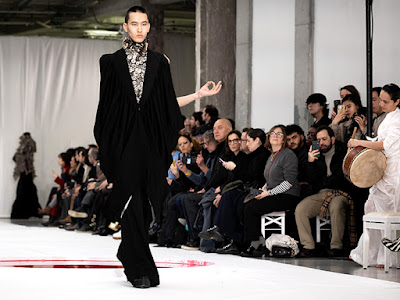 |
Long, origami-like tunics adorned with silvery, sculpted details elucidated the idea of Nakazato's 'ephemeral armour.' Photograph: Andrea Heinsohn |
“With a vista of transparent, turquoise blue seas and groves of olive trees spread before me, I imagined the Trojan War as it took place in this beautiful scenery during the Minoan civilization.
"These reflections led me to reconsider the state of our modern society thousands of years later, which then became the starting point for this collection."
The 'ephemeral armour' speaks to a new
paradigm of masculinity, one that embraces sensitivity and grace amid the chaos
of modernity. Each garment, painstakingly crafted from reclaimed textiles and
adorned with dramatic ceramics, is a testament to the
enduring power of real artistry in an age of transience.
“During my research, I was struck by the appearance of armour
from this period excavated from ancient ruins," Nakazato says. "It was so beautiful that I could
scarcely believe it had been designed for combat. I found myself wondering why
beauty was necessary for a garment intended for use in war.
The collection's 'ephemeral armour' speaks to a new paradigm of masculinity that embraces sensitivity and grace amid the chaos of modernity
 |
Pau Aran Gimeno on the runway with his 'blood-soaked' feet leaving a poignant trail. Photograph: Andrea Heinsohn |
"As a result,
repeated advances in functionality and rationality have culminated in the
current style of military wear. Interestingly, these garments have served as
prototypes for much of the clothing we wear today.”
As the models traversed the runway at Paris' Palais de Tokyo, accompanied by the haunting strains of Tsubasa Hori's piano and the writhing movements of dancer Pau Aran Gimeno, the audience was enthralled.
Nakazato's designs with their sculptural silhouettes and intricate detailing, which invite contemplation and introspection, evoke a visceral response in the viewer. Gimeno, dressed all in diaphanous white, stepped into the red pool, and as he moved along the catwalk, he created seemingly bloodied footsteps, signifying perhaps our effect on the planet.
Like all of his collections since he launched in 2016 on the official Paris haute couture schedule, Nakazato has made Utakata a manifesto for change, a call to arms for a new era of sartorial expression. His commitment to sustainability and innovation shines through all of his work, as he challenges the industry to embrace a more conscious approach to producing and creating fashion. From his pioneering use of fermented bacteria as compostable textiles to his revolutionary Type-1 system that does away with the needle and thread, Nakazato proves that fashion can be both visionary and virtuous.
Utakata is a manifesto for change, a call to arms for a new era of sartorial expression that shows how fashion can be both visionary and virtuous
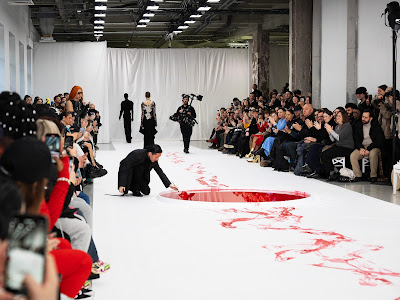 |
Designer Yuima Nakazato dips his brush into the red pool at the finale of his show in Paris. Photograph: Andrea Heinsohn |
In our
transient world, Yuima Nakazato's creations show how art in fashion can not only inspire,
provoke and elevate the human spirit but also be a practical inspiration for
real change at the level of fashion production and recycling.
“Through the contradictory existence of delicate, fragile armour created by textiles shredded and reclaimed from worn-out uniforms and workwear and decorated with ceramics, glass, and platinum, this collection shows the evolution of clothing, " explains the couturier. "It is also an attempt to fuse the delicate and fragile handwork elements of couture with the evolutionary path followed by men's clothing that has continued since ancient times."
In the months to come, as Nakazato prepares for the premiere of his exhibition Yuima Nakazato, Beyond Couture, at the Cité de la Dentelle et de la Mode in Calais in June, and pushes the boundaries of couture, his work continues to be a beacon of innovation, creativity, and above all, beauty. For in the fleeting moments of Ukataka and in the enduring collection of his designs, we glimpse the essence of fashion at its artistic best.
See more highlights from Yuima Nakazato's Utakata SS24 Collection in Paris below.
 |
| Utataka, Yuima Nakazato, Paris Haute Couture Spring/Summer 2024. Photograph: Andrea Heinsohn |
 |
| Utakata, Yuima Nakazato, Paris Haute Couture, Spring/Summer 2024. Photograph: Elli Ioannou |
 |
| Utakata, Yuima Nakazato, Paris Haute Couture, Spring/Summer 2024. Photograph: Andrea Heinsohn |
 |
| Utakata, Yuima Nakazato, Paris Haute Couture, Spring/Summer 2024. Photograph: Andrea Heinsohn |
 |
| Utakata, Yuima Nakazato, Paris Haute Couture, Spring/Summer 2024. Photograph: Andrea Heinsohn |
 |
| Utakata, Yuima Nakazato, Paris Haute Couture, Spring/Summer 2024. Photograph: Andrea Heinsohn |
 |
| Utakata, Yuima Nakazato, Paris Haute Couture, Spring/Summer 2024. Photograph: Andrea Heinsohn |
 |
| Utakata, Yuima Nakazato, Paris Haute Couture, Spring/Summer 2024. Photograph: Andrea Heinsohn |
 |
| Utakata,Yuima Nakazato, Paris Haute Couture, Spring/Summer 2024. Photograph: Elli Ioannou |
 |
| Utakata, Yuima Nakazato, Paris Haute Couture, Spring/Summer 2024. Photograph: Elli Ioannou |
 |
| Utakata, Yuima Nakazato, Paris Haute Couture, Spring/Summer 2024. Photograph; Ell Ioannou |
 |
| Utakata, Yuima Nakazato, Paris Haute Couture, Spring/Summer 2024. Photograph: Elli Ioannou |
 |
| Utakata, Yuima Nakazato, Paris Haute Couture, Spring/Summer 2024. Photograph: Elli Ioannou |
 |
| Utakata, Yuima Nakazato, Paris Haute Couture, Spring/Summer 2024. Photograph: Andrea Heinsohn |
 |
| Utakata, Yuima Nakazato, Paris Haute Couture, Spring/Summer 2024. Photograph; Andrea Heinsohn |
 |
| Utakata, Yuima Nakazato, Paris Haute Couture, Spring/Summer 2024. Photograph: Andrea Heinsohn |
Subscribe to support our independent and original journalism, photography, artwork and film.









































